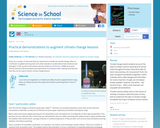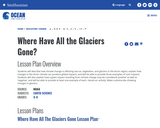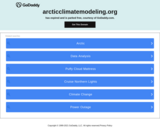
Students learn about greenhouse gases in this brief animated video.
- Subject:
- Earth Science
- Science
- Material Type:
- Lesson
- Provider:
- NASA
- Author:
- NASA - Jet Propulsion Laboratory
- Date Added:
- 02/26/2019

Students learn about greenhouse gases in this brief animated video.

Students learn about changes to Earth's systems and how this may be related to global climate change in this brief animated video.

This video demonstrates the role of heat capacity on ocean circulation, as it relates to climate change.

Students create a video that documents unrehearsed interviews with multiple persons-on-the-street about a specific question or issue in climate science. To produce a compelling product, students will need to both understand the underlying science themselves, and be able to conduct and document a series of interviews to elicit interviewees' understanding of the science as well.

This article offers suggestions for several demonstrations pertinent to the atmosphere, pollution, and global climate change.

Students research a climate change topic of their choice and create a Public Service Announcement (PSA) that communicates their understanding of the science, raises awareness about the causes and consequences of climate change and motivates people to take action in their communities, families and their own lives.

This quiz assesses student knowledge of the role of carbon in climate change.

Students will review global visualizations of incoming sunlight and surface temperature and discuss seasonal change.

This article highlights climate changes resulting from ancient volcanoes.

Students explore the relationships between ocean surface temperature and levels of atmospheric carbon dioxide and water vapor.

This video demonstrates the role of the sun on global warming.

In this activity, students analyze a graph of carbon dioxide concentrations at Mauna Loa Observatory and answer a series of questions based on the graph.

In this lesson, students will learn about forest biomass and its role in carbon storage. They will compare field-collected data with results produced by a forest biomass model to understand the process and challenges scientists face when doing terrestrial carbon cycle research.

In this unit, students engage in lessons where they develop some basic background knowledge about climate change drawing on research from scientists around the world. They will begin to develop key ideas that climate change is happening, we can observe it and it is a global problem. Students also begin to understand some of the lines of climate change evidence. More fundamentally, Unit 1 explores the relationship between climate and life, helping students explain the difference between weather and climate.

In this unit, students explore 150+ years of scientific work, an interdisciplinary body of knowledge that contributed to the discovery of global warming. Students will develop a qualitative and quantitative sense about how Earth’s global mean temperature has changed over the Industrial Era and its relationship global carbon dioxide levels.

Students explore how solar radiation, Earth's surface and oceans, and greenhouse gases interact to cause global warming. They can change variables to determine how much greenhouse gas emissions might need to fall to mitigate the temperature increase.

Healthy soil gives us many benefits, including nutritious food. During this video, I interview a local farmer to find out how he takes care of his soil. I also demonstrate an activity where students can try their hand at designing their own soil-friendly yard or green space, either at home or at school.

Students will describe how climate change is affecting sea ice, vegetation, and glaciers in the Arctic region, explain how changes in the Arctic climate can produce global impacts, and will be able to provide three examples of such impacts. Students will also explain how a given impact resulting from climate change may be considered ?positive? as well as ?negative?, and will be able to provide at least one example of each. Students will work in collaborative groups to research this issue and gather information to participate in a large-group discussion. In an optional extension activity, students create a photocube display with images of the Arctic region.

In this lesson, students gain climate literacy through exploration of common climate-change terms and calculate their own potential carbon dioxide contributions.

In this lesson, students will learn about the environmental, economic, and political issues surrounding global climate change policy.